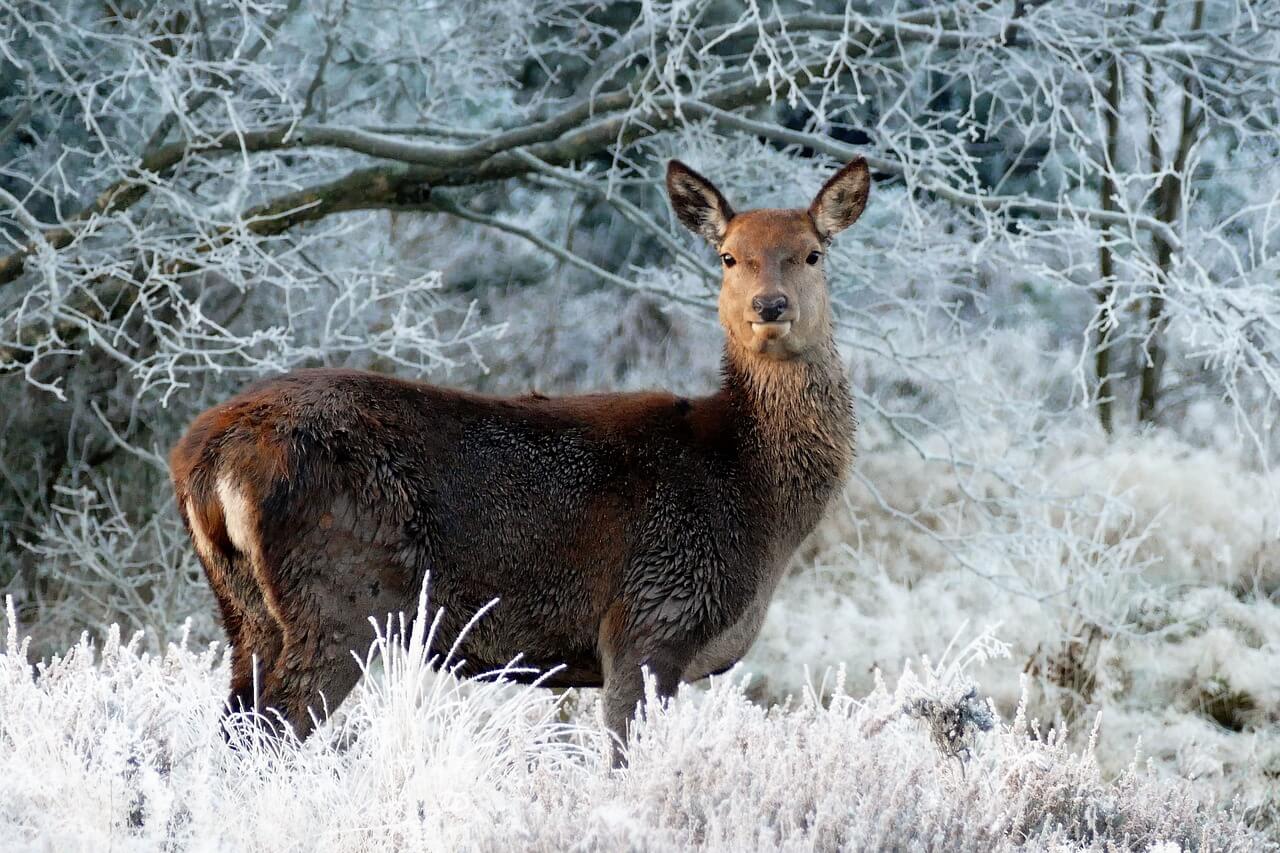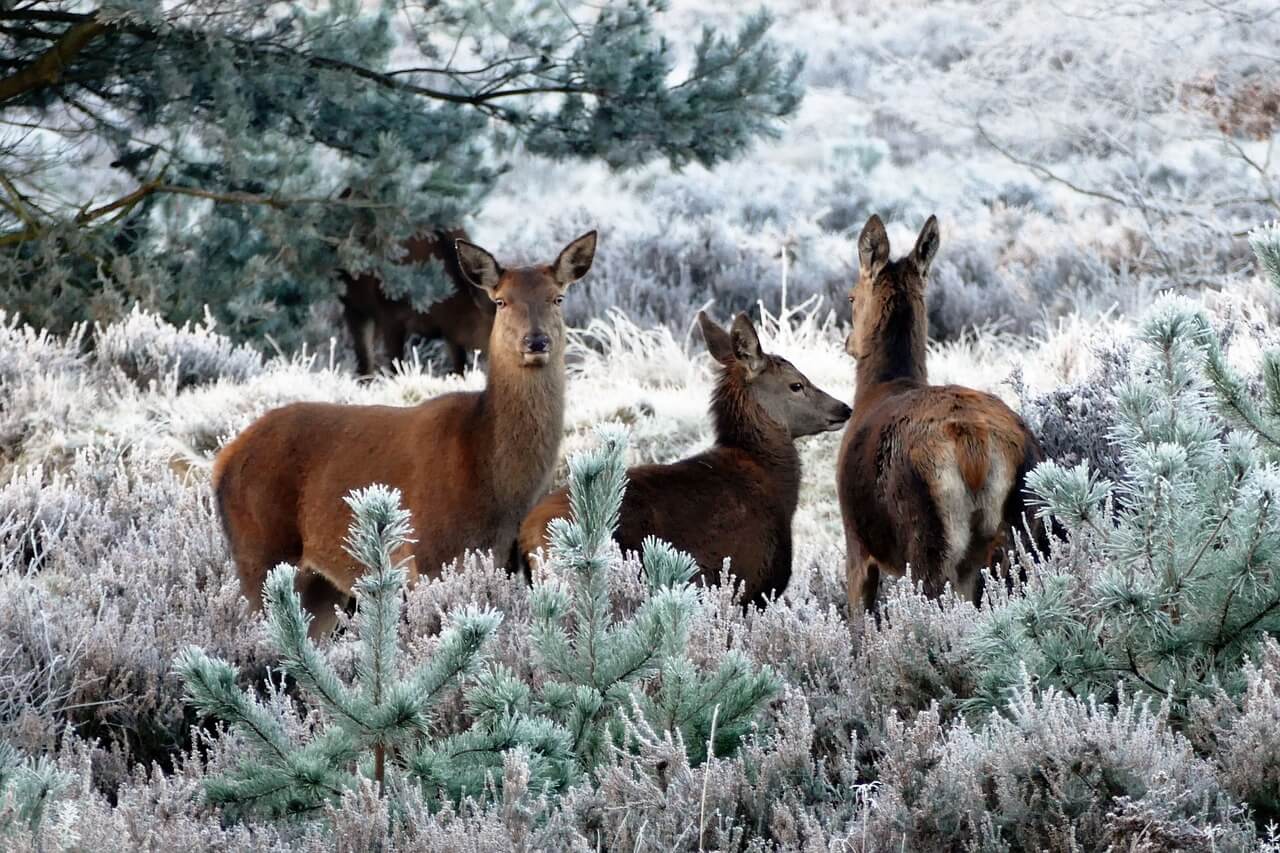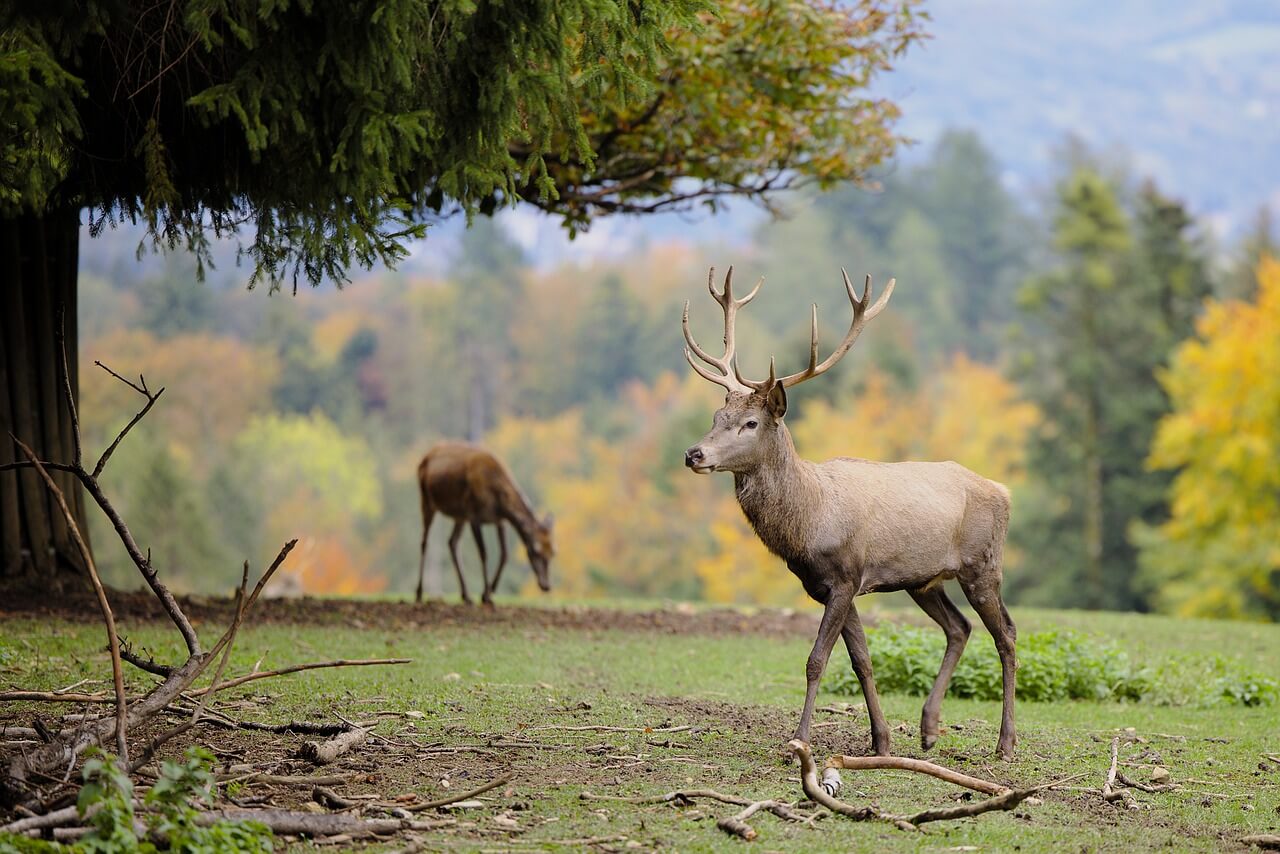If you’ve ever seen a deer with snow piled on their coat and wondered how they get through the winter, you’re not alone. It’s amazing that these creatures are able to find enough food, stay warm, and avoid predators throughout even the harshest of winters. But they’ve been doing it for millions of years, and have gotten pretty good at it. So how do deer survive winter?
What You'll Learn Today
What Do Deer Eat in the Winter?

Deer can typically get through the winter with their normal diet. This includes grass, stems, twigs, and various other plants.
You can often find deer grazing in cornfields and soybean fields in the winter. Leftover corn and soybeans are found laying around on the ground after the fall harvest.
While those crops do contain calories and carbs, deer would have to eat a great deal of them to survive the winter. Therefore, it’s important for them to find other sustenance.
The bulk of a deer’s diet consists of what experts call “woody browse”. This refers to buds, leaves, and twigs on woody plants, and varies depending on geographical location.
While deer are able to find their favorite foods in the winter, it tends to be harder to get to with ice and snow on the ground. They supplement with nuts, fruits, and some other high-calorie foods to ensure they maintain enough energy to survive.
How Do Deer Stay Warm in the Winter?

Deer that live in areas with cold winters have adapted to make it through harsh weather. Here’s how they stay warm:
1. They grow an extra layer of fur
During the fall, deer grow an undercoat of denser fur, with long hollow fur on top. This fur retains heat and absorbs sunlight, allowing them to soak up as much extra warmth as possible.
2. Deer bulk up for the winter
Deer need to eat up to nine pounds of food every day starting in the fall to build up their fat reserves. The high-energy foods like nuts and fruits that they supplement with help to increase their body fat for the winter.
3. They are less active
When the weather gets colder, deer tend to hunker down and stay put when they find a good spot. By being less active, their metabolism slows down, meaning they can conserve energy and won’t need to find as much food to eat.
For a visual reference on how deer stay warm with their sleek coats, check out this video. It also gives a quick overview of deer survival in the winter.
Where Do Deer Sleep in the Winter?

Since deer try to stay less active in the winter, it’s important for them to find a good space to rest. They need spots that keep them safe from the elements as well as predators.
Deer can often be found resting under coniferous trees, such as pine trees. The branches of these trees stay dense and hang low through the winter, providing shelter from the wind and snow. Conifers also hold in heat in the winter, making it a warmer spot for deer to sleep.
Even with safe, warm spots to lay down, you will rarely spot a sleeping deer in the wild. Deer only sleep for about 5-10 minutes at a time, to ensure that they’re alert and safe from predators at all times.
Do Deer Sleep Together?
If you live in the northeast, in particular, you might be used to seeing deer congregate in certain areas during the winter.
This phenomenon is called “yarding”, and it typically occurs when the weather is at its coldest and snowiest. It’s common to see large groups of deer in fields where there are post-harvest leftovers, thickets, and nearby evergreen trees.
Deer gather like this in the winter for several reasons:
- Strength in numbers: Prey like deer have a better chance at defending themselves against predators when they’re in a group.
- It’s easier to make tracks: Snow can make it difficult for deer to get around efficiently. Their hooves cut through the snow, slowing them down and making them easy targets for predators. Larger groups of deer can easily flatten the snow and make a clearer path.
- Ample food sources: Deer will naturally flock toward spots with more food. So if there’s a large group congregating in an area, you can assume that they found a good spot to eat.
While deer have many tried and true methods of gearing up for winter, it can still be tough for them in harsh conditions. So if you see a deer huddled up somewhere in your yard, try not to disturb them. They’re likely conserving precious energy and will move along when they need to.
Ready for some more information guides about deer? Here is our guide about deer pregnancy.
Is there any deer species that live in artic areas like Russia or Greenland?
yes reindeer